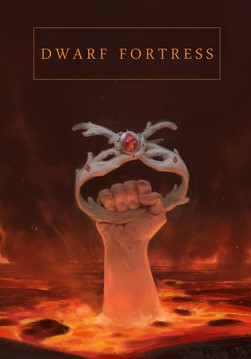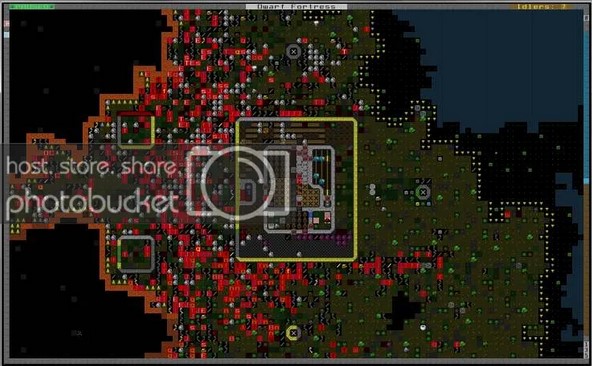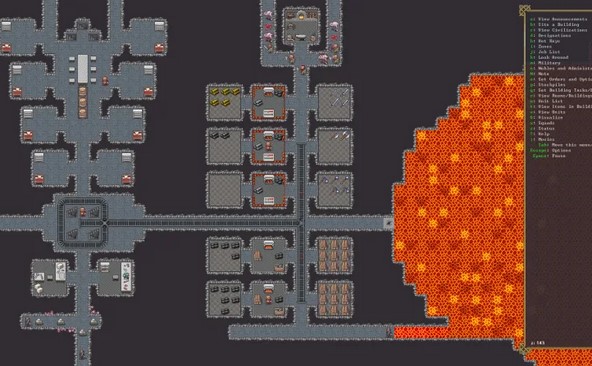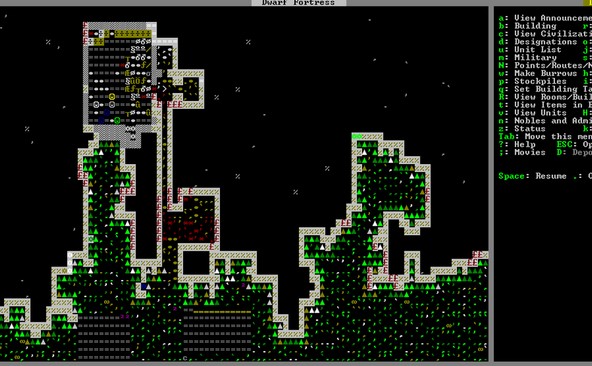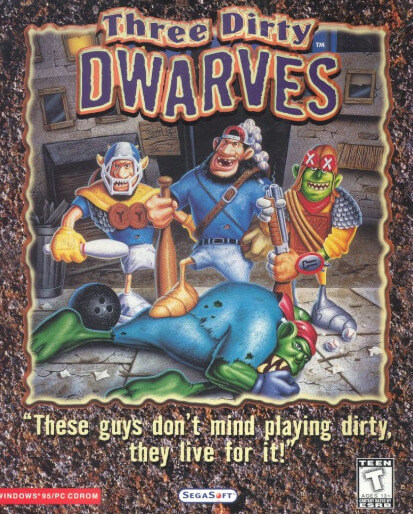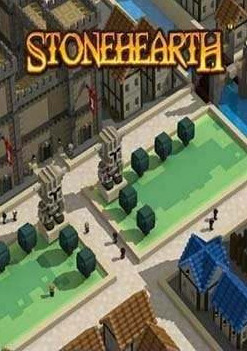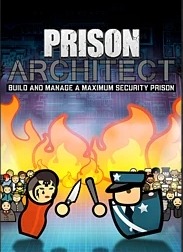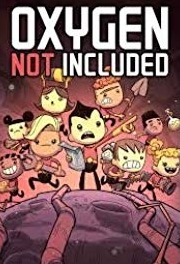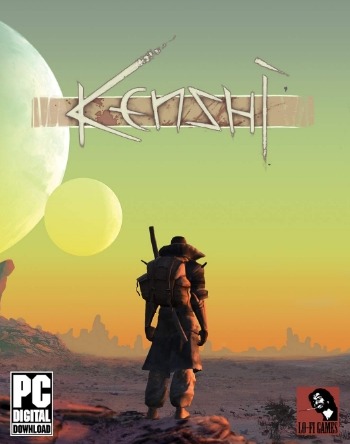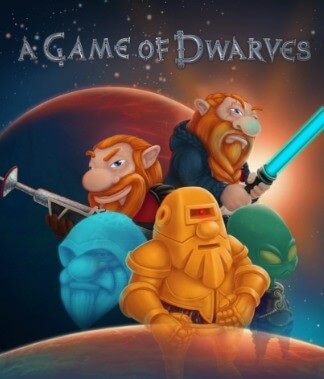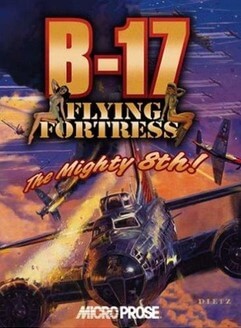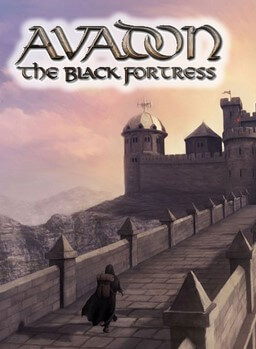Dwarf Fortress (officially called Slaves to Armok: God of Blood Chapter II: Dwarf Fortress) is a part construction and management simulation, part roguelike, indie video game created by Tarn and Zach Adams. Freeware and in development since 2002, its first alpha version was released in 2006 and it received attention for being a two-member project surviving solely on donations. The primary game mode is set in a procedurally generated fantasy world in which the player indirectly controls a group of dwarves, and attempts to construct a successful and wealthy underground fortress. Critics praised its complex, emergent gameplay but had mixed reactions to its difficulty. The game influenced Minecraft and was selected among other games to be featured in the Museum of Modern Art to show the history of video gaming in 2012.
The game has text-based graphics and is open-ended with no main objectives. Before playing, the player has to set in motion a process which generates worlds with continents, oceans and histories documenting civilizations. The main game mode, Dwarf Fortress, consists of selecting a suitable site from the generated-world, establishing a successful colony or fortress, combating threats like goblin invasions, generating wealth and taking care of the dwarves. Each dwarf is modeled down to its individual personality, has likes or dislikes and possesses specific trainable skills in various labors. The second main game mode, Adventurer, is a turn-based, open-ended roguelike mode where the player starts off as an adventurer in the world and is free to explore, complete quests, or even visit old abandoned fortresses. The combat system is anatomically detailed with combat logs describing events like organs getting pierced, fat getting bruised and limbs getting severed.
Prior to Dwarf Fortress, Tarn Adams was working on a project called Slaves to Armok: God of Blood which was a role-playing game. By 2004, Adams decided to shift from the original Armok to Dwarf Fortress after the former became difficult to maintain. Adams calls it his life's work and said in 2011, that version 1.0 will not be ready for at least another 20 years, and even after that he would continue to work on it. The game has a cult following and an active online community. As there is no way to win, every fortress, no matter how successful, is usually destroyed somehow. This prompts the official community motto: "Losing is Fun!"
Gameplay
World generation
The first step in Dwarf Fortress is generating a playable world; only one game can be played per world at a time. The player can adjust certain parameters governing size, savagery, mineral occurrences and the length of history. The map shows symbols representing roads, hills, towns and cities of the various civilizations, and it changes as the generation progresses.
The process involves procedurally-generated basic elements like elevation, rainfall, mineral distribution, drainage and temperature. For example, a high-rainfall and low-drainage area would make a swamp. Areas are thus categorized into biomes, which have two variables: savagery and alignment. They have their own specific type of plant and animal populations. The next phase is erosion—which the drainage simulates. Rivers are created by tracing their paths from the mountains (which get eroded) to its end which is usually an ocean; some form into lakes. The salinity field defines oceans, mangroves or alluvial plains. Names are generated for the biomes and rivers. The names depend on the area's good/evil variable (the alignment) and though in English, they are originally in one of the four in-game languages of dwarves, elves, humans and goblins; these are the four main races in any generated world.
After a few minutes the world is populated and its history develops for the amount of in-game years selected in the history parameter. Civilizations, races and religions spread and wars occur, with the "population" and "deaths" counters increasing. The ticker stops at the designated "years" value, at which point the world can be saved for use in any game mode. Should the player choose to retire a fortress, or should they be defeated, this world will persist and will become available for further games.
Dwarf Fortress (game mode)
Basics
When Dwarf Fortress mode is selected, the player is given the option to choose the embark location in the world. The player can consider the environment, elevations, biome, soil types and mineral concentrations which can pose significant challenges to the development or survival of the fortress. Customizing the colony's supplies, domestic animals and skills are available, but each dwarf's mental and physical attributes are randomly generated. The game describes in detail each dwarf's physical appearance, like hair and facial features. The mental abilities, individual preferences and desires are also randomly generated. Each dwarf's relationships with others and the deities they worship can be viewed.
The player embarks with the expedition team (seven dwarves, their livestock and supplies), and does not have direct control over them. In order to construct and operate the fortress, the player has to designate specific tasks to be performed and the dwarves will go about it. They can be assigned any labors, but their work still depends on their relative skill with it, which can increase as they perform said task. Some task categories are stone-working, woodworking, metalworking, farming, and crafting; there are further combat-related skills. They are categorized further, such as are leatherworking, butchery, clothesmaking, gem cutting, glassmaking, and pottery. Activities take place in workshops which need to be constructed; for example, stills for brewing alcohol. The metal industry has a very important role because it produces weapons and armor for the military, trap components for defense, and high-value furniture and decorations.
